Versuchen GOLD - Frei
GHOST TRACKS OF WHITE SANDS
Archaeology
|November/December 2021
Scientists are uncovering fossilized footprints in the New Mexico desert that show how humans and Ice Age animals shared the landscape

The sun shines nearly 300 days a year over southern New Mexico’s Tularosa Basin, where bright white sand ripples across the desert. Here, in White Sands National Park, the world’s largest gypsum dunes abut the dried-up bed of prehistoric Lake Otero, which once covered 1,600 square miles. In the summer, park temperatures can reach 110°F. One’s eyes sting in the intense sunlight. It was just such a sunny day in May 2021 when Bonnie Leno and Kim Charlie, sisters from Acoma Pueblo, about 175 miles north, found the fossilized tracks of a giant ground sloth and two humans, all of whom lived at least 10,000 years ago, at the close of the Pleistocene Epoch.
Leno and Charlie didn’t expect to uncover a piece of late Pleistocene history at the park, but there they were, the kidney-shaped footprints of a 10-foot-tall, 2,000-pound long-extinct mammal and the imprints of human toes—evidence of two species that coexisted thousands of years ago. “I was down on the ground, brushing everything off,” says Leno, recalling the adult human footprint she found not far below the surface. “I was ecstatic.” Just inches away, she spotted the giant sloth track. “There were a lot of prints in that area,” says Charlie, who uncovered the tiny footprint of a child nearby.
Diese Geschichte stammt aus der November/December 2021-Ausgabe von Archaeology.
Abonnieren Sie Magzter GOLD, um auf Tausende kuratierter Premium-Geschichten und über 9.000 Zeitschriften und Zeitungen zuzugreifen.
Sie sind bereits Abonnent? Anmelden
WEITERE GESCHICHTEN VON Archaeology
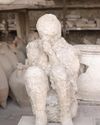
Archaeology
LEGEND OF THE CRYSTAL BRAIN
When most people envision the victims of the eruption of Mount Vesuvius in A.D. 79 that destroyed the cities of Pompeii and Herculaneum, they think of the casts of their bodies made by pouring plaster into voids left by their decaying corpses. Yet not all the physical remains of those who perished in the cataclysm decayed. In one case, a remarkable transformation occurred—a man’s brain turned to glass.
3 mins
July/August 2025
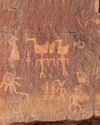
Archaeology
Birds of a Feather
Intriguing rock art in the Four Corners reveals how the Basketmaker people drew inspiration from ducks 1,500 years ago
8 mins
July/August 2025
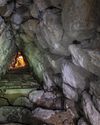
Archaeology
THE HOME OF THE WEATHER GOD
In northern Anatolia, archaeologists have discovered the source of Hittite royal power
13 mins
July/August 2025
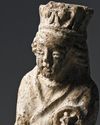
Archaeology
SAINTS ALIVE
Since 2019, archaeologists have been excavating in Berlin's oldest square, known as the Molkenmarkt, or Whey Market.
1 min
July/August 2025

Archaeology
SOLDIERS OF ILL FORTUNE
The Schmalkaldic War, which began in 1546 and lasted less than a year, pitted the forces of the Holy Roman emperor Charles V (reigned 1519-1556) against the Schmalkaldic League, a Protestant alliance formed by German principalities and cities within the empire.
1 mins
July/August 2025

Archaeology
A NEW LOOK AT AN OLD CITY
Archaeologists are reconstructing the complicated 400-year history of Virginia's colonial capital
13 mins
July/August 2025
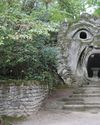
Archaeology
ITALY'S GARDEN OF MONSTERS
Why did a Renaissance duke fill his wooded park with gargantuan stone
10 mins
July/August 2025
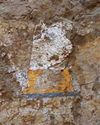
Archaeology
In Search of Lost Pharaohs
Anubis Mountain conceals the tombs of an obscure Egyptian dynasty
3 mins
July/August 2025
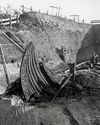
Archaeology
Setting Sail for Valhalla
Vikings staged elaborate spectacles to usher their rulers into the afterlife
15 mins
July/August 2025
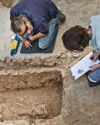
Archaeology
BOUND FOR HEAVEN
During excavations of a Byzantine monastery in 2017 just north of Jerusalem's Old City, a team led by Israel Antiquities Authority archaeologists Zubair 'Adawi and Kfir Arbiv discovered an unusual burial in a crypt beneath the altar of the complex's church.
1 mins
July/August 2025
Translate
Change font size
